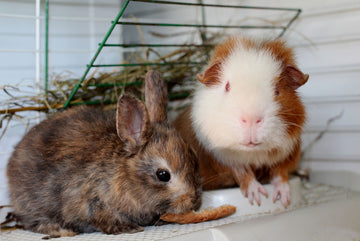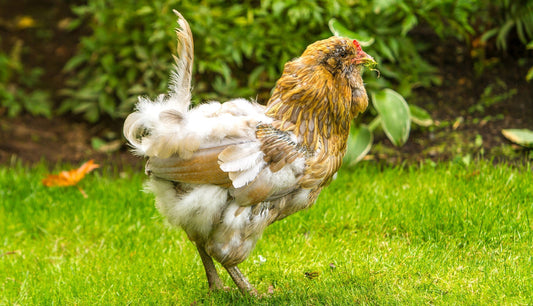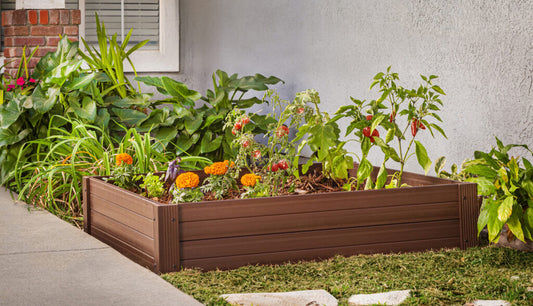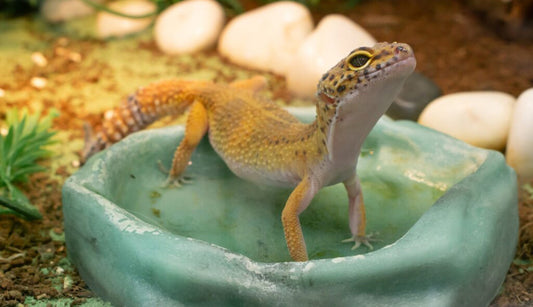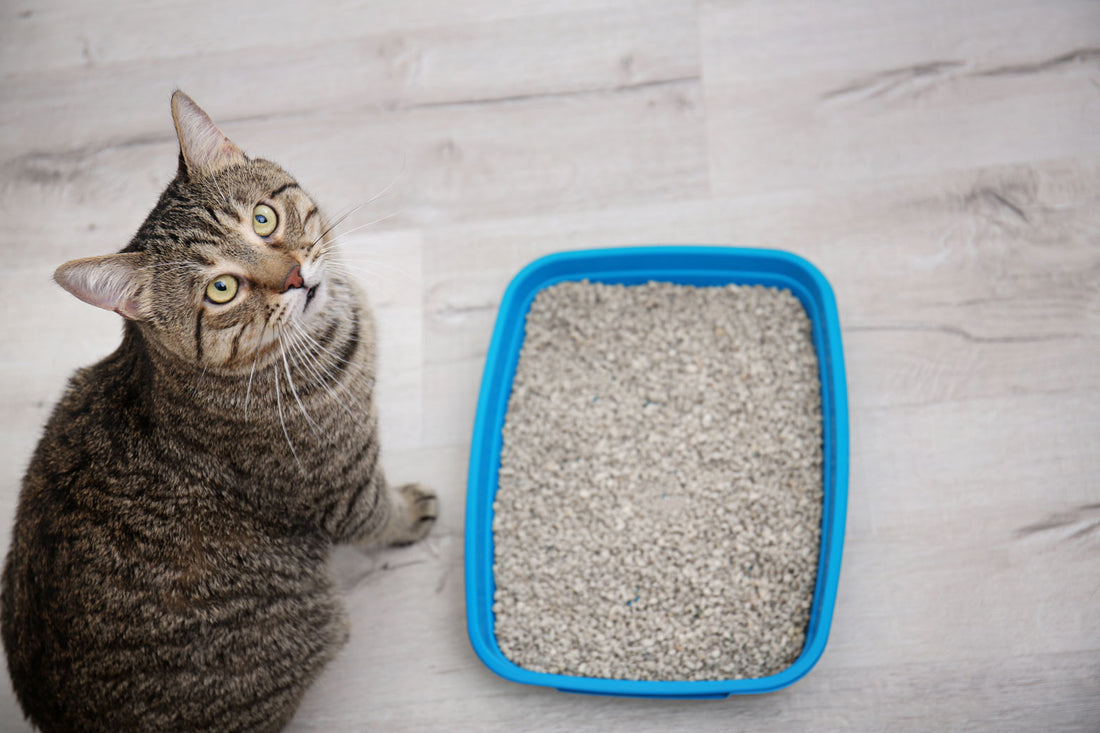
Cat Litter 101: Considerations When Choosing Cat Litter and a Cat Litter Box
Cat Litter 101: A Comprehensive Guide
Caring for your feline friend involves many aspects, and one crucial element is providing the right cat litter. With various options available, understanding the differences and choosing the right one for your cat can make a significant impact on their well-being. In this guide, we'll delve into everything cat litter, covering types, boxes, considerations, and best practices.
Choosing the Right Cat Litter
When selecting cat litter, consider factors such as your cat's preferences, your budget, and environmental concerns. Some cats may have specific sensitivities or preferences for certain textures, so it might take some experimentation to find the perfect fit.
Always keep the litter box clean by scooping waste daily and changing the litter regularly. Pay attention to any signs of discomfort or aversion from your cat, as it could indicate a need for a different type of litter.
Here are some key considerations when choosing cat litter:
Odor Control
- Look for litters with activated carbon for effective odor absorption.
- Cats may prefer unscented litters, especially if they are sensitive to fragrances.
Texture and Comfort
- Is it soft on the paws? Consider your cat's comfort, especially if they have sensitive paws.
- Is the texture fine or coarse? Some cats have preferences for finer or coarser textures.
Dust Level
- Dust can be irritating for both cats and owners. Opt for low-dust or dust-free litters.
Health Considerations
- If your cat has allergies or respiratory issues, choose a hypoallergenic litter.
- Some litters track onto the floor more than others, so consider the mess factor.
Types of Cat Litter
These days there are many cat litter options in stores and online - each has their own advantages:
1. Clay-based Litter
Clay based litter is the traditional choice and the most popular form of cat litter. Clay litters, either clumping or non-clumping, have been a staple for years.
Pros:
- Absorbent: Clay litter is highly absorbent, effectively controlling odors.
- Affordable: It's often more budget-friendly compared to other types.
Cons:
- Dusty: Clay litter can produce dust, which may be problematic for cats and humans with respiratory issues.
- Environmental impact: Traditional clay litter is not biodegradable and may contribute to environmental concerns.
2. Clumping vs. Non-clumping: Clumping litters are often clay based and form solid clumps when wet, making it easier to scoop. Non-clumping absorbs moisture but doesn't clump.
Clumping Cat Litter:
Pros:
- Easy cleanup: Forms solid clumps, making it easy to scoop out waste
- Odor control: Effectively controls odors by encapsulating moisture
Cons:
- Tracking: Clumping litter can be tracked outside the litter box more than non-clumping varieties.
- Flushability: Not all clumping litters are flushable.
Non-clumping Cat Litter:
Pros:
- Dust-free: Generally produces less dust than clumping options.
- Budget-friendly: Non-clumping litter is often more economical.
Cons:
- Odor control: May not control odors as effectively as clumping alternatives.
- Cleanup: Requires more frequent complete changes.
3. Silica Gel Crystals
Silica gel-based litter is super absorbent. Silica gel crystals absorb liquid effectively, control odor, and are a low-dust option. Silica gel litter is also long-lasting. Though more expensive, it often lasts longer between changes compared to traditional litters.
Pros:
- Super absorbent: Silica gel litter absorbs moisture exceptionally well.
- Low dust: It produces less dust than clay litter.
Cons:
- Initial cost: Silica gel litter is typically more expensive than clay options.
- Non-biodegradable: Like clay, it is not biodegradable, posing environmental challenges.
4. Biodegradable Options
Biodegradable cat litter is made from eco-friendly materials like corn, wheat, pine, or recycled paper offering environmentally friendly alternatives to other litter types. Some biodegradable litters are also flushable, which can make litter disposal much more convenient. However different options have varying degrees of odor control.
Pros:
- Eco-friendly: Made from renewable resources like corn, wheat, or recycled paper.
- Flushable: Some natural litters are safe for flushing.
Cons:
- Tracking: Some natural litters can be prone to tracking.
- Odor control: Effectiveness varies among different natural options.
5. Natural/Bamboo Litter
Most natural cat litters are chemical-free and made from bamboo or other natural materials. These litters are often free from additives and chemicals and offer low-dust options which are ideal for cats with respiratory sensitivities. But, like other biodegradable litters, may have difficulties with tough odors.
Pros:
- Eco-friendly: Made from bamboo and natural materials
- Ideal for sensitive cats
Cons:
- Tracking: Some bamboo litters can be prone to tracking.
- Odor control: Bamboo litter can have varying degrees of effectiveness.
6. Color Changing Cat litter
Color-changing cat litter is designed to detect certain abnormalities in your cat's urine, which can be indicative of various health issues. While it can be a helpful tool for early detection of potential issues, it is not a substitute for professional veterinary care. Here are some problems or conditions that color-changing cat litter may help identify:
Urinary Tract Infections (UTIs):
Changes in urine color or pH may indicate the presence of a urinary tract infection. UTIs are common in cats and can cause discomfort and other health issues.
Dehydration:
Monitoring changes in urine concentration, such as specific gravity, can help identify dehydration in cats. Dehydration is a serious concern and may be associated with various underlying health conditions.
Kidney Problems:
Abnormalities in urine color or composition may signal kidney problems. Kidney issues can affect a cat's overall health and require prompt veterinary attention.
Diabetes:
Color-changing cat litter may detect changes in urine related to diabetes, such as increased glucose levels. Diabetes in cats requires careful management and monitoring.
Liver Conditions:
Certain liver conditions can be reflected in changes in urine color or composition. Detecting these changes early may prompt further investigation into liver health.
Bladder Issues:
Color-changing litter may help identify issues with the bladder, such as inflammation or the presence of crystals. These conditions can lead to discomfort and urinary tract problems.
Blood in Urine:
The presence of blood in the urine, indicated by a color change, can be a sign of various health issues, including bladder infections, stones, or other urinary tract disorders.
Metabolic Disorders:
Some color-changing cat litters may provide insights into metabolic disorders by monitoring specific parameters in the urine.
Pros:
- Health monitoring
- Early detection of problems
- Convenience
- Educational tool
Cons:
- Limited to color detection
- False positives
- Dependency on visual inspection
- Higher cost
- Limited options
- Not suitable for all cats
Types of Cat Litter Boxes
When choosing a cat litter box, consider your cat's preferences, the available space, and your own lifestyle. It's essential to keep the box clean, regardless of the type, to ensure your cat's comfort and hygiene. Cat litter boxes come in various types, each with its own set of pros and cons. Here's a breakdown of different types of cat litter boxes and what you should consider for each:
1. Traditional Open Litter Box
This is the traditional bin or “box” shape usually made of plastic.
Pros:
- Easy access
- Budget-friendly
- Easy monitoring
Cons:
- Harder to control odors
- Cats may kick litter outside the box
2. Covered or Hooded Litter Box
Covered litterboxes are similar to a traditional open box but with a cover.
Pros:
- Cover helps contain odors
- Offers cats a sense of privacy
- Reduces litter scatter outside the box
Cons:
- Size limitations for larger cats
- Can be harder to clean
- Ventilation issues
3. Top-Entry Litter Box
Top entry litterboxes are similar to covered ones but the entrance hole is in the top of the enclosure.
Pros:
- Reduces litter tracking
- Offers privacy for cats
- Helps contain odors
Cons:
- Some cats may find it challenging to enter
- Not suitable for larger cats
- Cats may need time to adjust
4. Self-Cleaning or Automatic Litter Box
A self-cleaning litter box has a mechanism that removes the cat waste from the litter.
Pros:
- Convenience
- Odor control
- Reduced scooping
Cons:
- Higher cost
- May require maintenance.
- Cats may need time to acclimate
5. Disposable Litter Box
Disposable litter boxes can be thrown away with the litter when it needs to be changed.
Pros:
- Convenient
- Ideal for travel or temporary use
- Odor control if fresh box is used
Cons:
- Not as sturdy as permanent boxes
- Limited sizes
- Environmental impact
6. Hidden or Furniture Litter Box
Furniture litter boxes are a permanent piece of decorative furniture in your room.
Pros:
- Aesthetic appeal
- Privacy
- Odor control
Cons:
- Can be more expensive
- Limited space for larger cats
- Some brands may be more challenging to clean
Best Practices for Cat Litter Maintenance
Caring for your cat includes providing a comfortable and clean environment.
By following just a few easy steps, you can make your cat box much more appealing for both you and your cat.
Regular Scooping:
- Create a daily routine. Scoop waste daily to maintain a clean litter box.
- Compare clumping benefits. Clumping litters simplify waste removal.
Complete Changes:
- Frequency: Completely change the litter regularly, typically every 2-4 weeks.
-
Cleaning the box: Wash the litter box with mild soap and water during litter changes.
Multi-Cat Considerations
- Size matters; if you have multiple cats, ensure the litter box is large enough to accommodate them all.
- Ensure that you provide one more litter box than the total number of cats in the home. Place them in at least two different locations (if you have two cats, provide at least three litter boxes). Having more than one litter box can prevent territorial issues.
Introduce Gradually:
- Create a transition period when changing litters. Introduce the new one gradually to avoid startling your cat.
In conclusion, the key to successful cat litter management is understanding your cat's needs and choosing a litter that aligns with both their preferences and your lifestyle. With the right choice, maintaining a clean and odor-free environment for your cat becomes a breeze.


